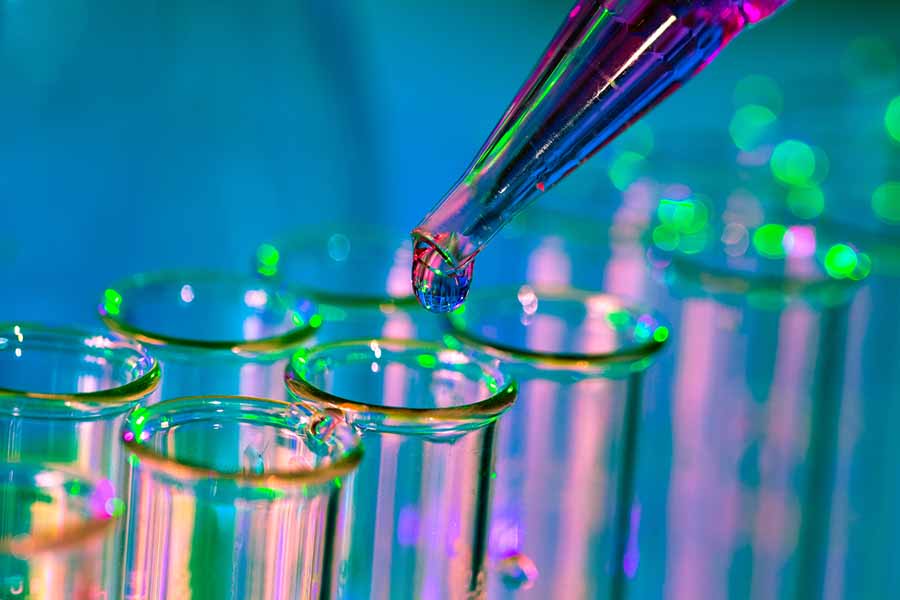What You Need to Know About Non-Stick, Stain & Water Repellent Chemicals

A group of man-made chemicals called per- and polyfluoroalkyl substances (PFAS) have been around since the 1940's, making our lives easier through non-stick and stain-resistant products.
All that convenience comes at a price though because PFAS do not break down and can accumulate over time in the environment and in your body. Researchers have compelling evidence that exposure to some PFAS can cause adverse health effects.
You may have read or heard about two of the most extensively produced of these chemicals, PFOA & PFOS. Here's what you need to know about the chemicals PFOA, PFOS, and other PFAS.
Where Can PFAS Be Found?
PFAS are used in a wide variety of products including non-stick products; water, grease, and stain resistant products; and firefighting foam.
Many Consumer Products contain PFAs:
- Non-stick cookware: frying pans, cookie trays, muffin tins
- Grease-resistant packaging: pizza boxes, take out containers, microwave popcorn bags
- Water resistant clothing: skiwear, raincoats
- Stain resistant fabrics & carpets
- Polishes, waxes, paints
- Cleaning products
PFAS can also be found in the following:
- Drinking water through contamination
- Food packaged in PFAS-containing materials
- Food grown in PFAS-contaminated soil and water
- Firefighting foam
- Living organisms including fish, humans, and animals
Food and water can contain PFAS. If food is grown in PFAS-contaminated soil or water, then it can be contaminated. Drinking water can also be a problem but typically only if your water source is near a manufacturer that uses PFAS, a landfill, wastewater treatment or firefighter training facility.
Studies have shown that most people have been exposed to PFAS.
PFOA & PFOS Phased Out in the US, But Not Internationally
Two of the most extensively produced and studied PFAS (PFOA & PFOS) are no longer manufactured in the US. Eight of the major chemical manufacturers stopped using PFOA & PFOS-related chemicals in products because of concerns about health risks. Unfortunately, these chemicals are in use internationally and can be imported into the US in consumer goods like carpet, packaging, plastics, textiles and more.
Safety of Replacement PFAS is Unknown
While it's good news that the major US companies have phased out some dangerous chemicals, there is much less knowledge about the chemicals that have replaced them. At this point, you have no way of knowing about the safety of the replacement chemicals, such as GenX.
While GenX has fewer carbon atoms in the chain than the phased out chemicals, it has similar physical and chemical properties. The replacement chemicals could be very safe or not be safe at all. Only time and new studies will tell.
Adverse Health Effects of PFAs in Humans
Studies show evidence of adverse health effects from exposure to PFAS. PFAS persist in the body for a long time and can accumulate. In laboratory animals, researchers found that PFOA & PFOS can cause reproductive and developmental, liver and kidney, and immunological effects.
For people, findings consistently found increased cholesterol levels with more limited findings related to infant birth weights, immune system effects, cancer (PFOA), and thyroid disruption (PFOS).
How to Reduce Your Exposure to PFAS
The good news is that you can control some of your exposure to PFAS.
-
Avoid Non-Stick Cookware: Try these other great ways to cook without the worry or risk.
- Stainless Steel
- Cast Iron
- Ceramic Baking Dishes
- Glass Baking and Pie Dishes
These alternatives have the added benefit of being long-lasting, unlike non-stick pans and trays.
-
Reduce use of take-out/processed food: Wrappers and containers that are water and grease-proof may have been treated with PFAS. While you may not want to alter your take-out lifestyle, being aware of the issue is a good start. It’s all about balance.
- If possible, opt out of stain-resistant coatings for furniture and carpets
- Filter your drinking water. If you live in an area where PFAS have been found in your water source, then it's a good idea to filter your drinking water using a water filter that removes PFOA & PFOS. All of the Propur water filters remove PFOA & PFOS. To find out more about your water safety, simply google the name of your city followed by the words, Water Quality Report. In that report, you can find information about whether your water has these chemicals. You'll have to read the report carefully since PFAS are unregulated, so they'll appear in a different section of your water report from the regulated contaminants.
Want more information? Read the following articles:










